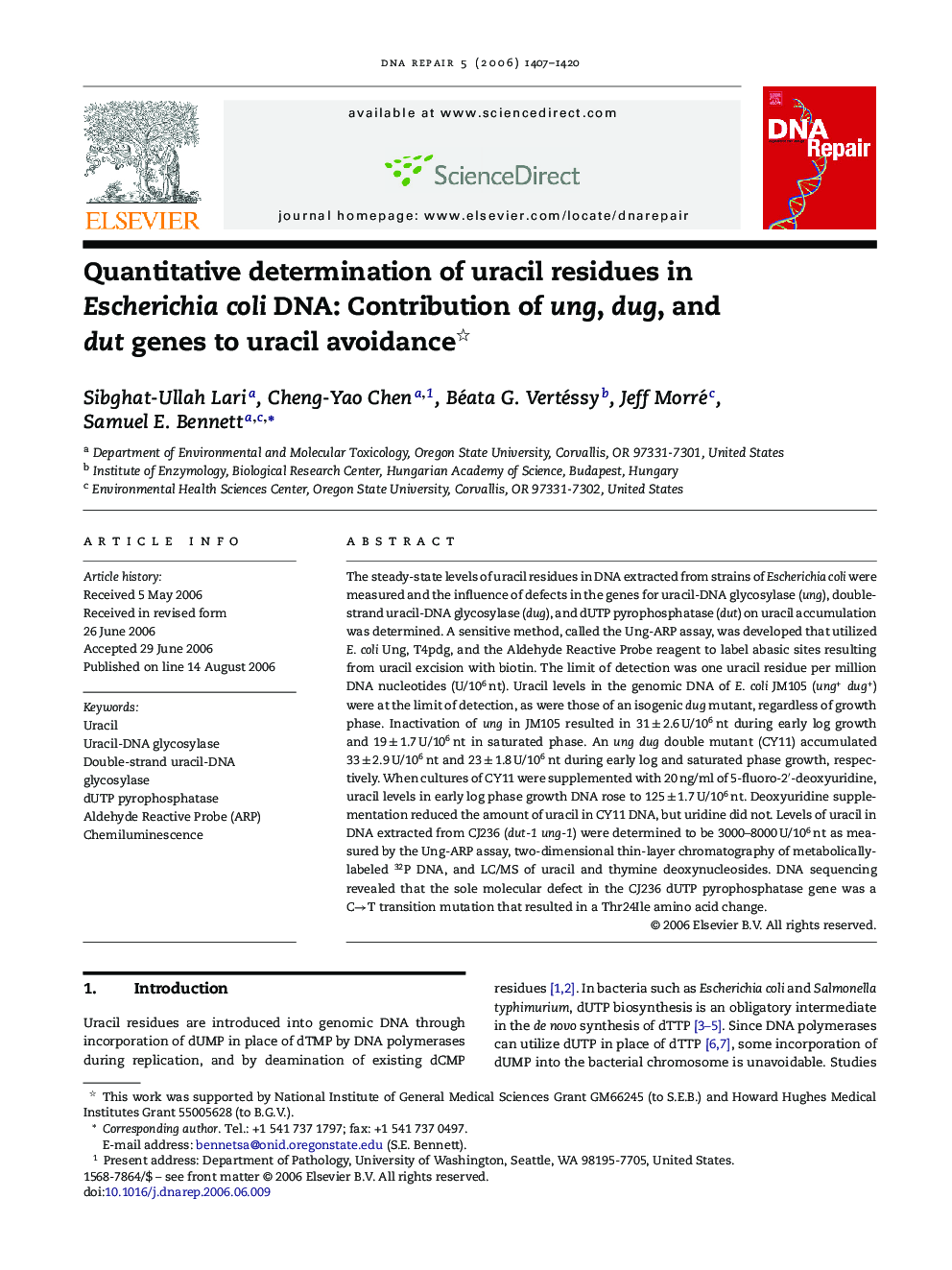| Article ID | Journal | Published Year | Pages | File Type |
|---|---|---|---|---|
| 1981478 | DNA Repair | 2006 | 14 Pages |
The steady-state levels of uracil residues in DNA extracted from strains of Escherichia coli were measured and the influence of defects in the genes for uracil-DNA glycosylase (ung), double-strand uracil-DNA glycosylase (dug), and dUTP pyrophosphatase (dut) on uracil accumulation was determined. A sensitive method, called the Ung-ARP assay, was developed that utilized E. coli Ung, T4pdg, and the Aldehyde Reactive Probe reagent to label abasic sites resulting from uracil excision with biotin. The limit of detection was one uracil residue per million DNA nucleotides (U/106 nt). Uracil levels in the genomic DNA of E. coli JM105 (ung+dug+) were at the limit of detection, as were those of an isogenic dug mutant, regardless of growth phase. Inactivation of ung in JM105 resulted in 31 ± 2.6 U/106 nt during early log growth and 19 ± 1.7 U/106 nt in saturated phase. An ung dug double mutant (CY11) accumulated 33 ± 2.9 U/106 nt and 23 ± 1.8 U/106 nt during early log and saturated phase growth, respectively. When cultures of CY11 were supplemented with 20 ng/ml of 5-fluoro-2′-deoxyuridine, uracil levels in early log phase growth DNA rose to 125 ± 1.7 U/106 nt. Deoxyuridine supplementation reduced the amount of uracil in CY11 DNA, but uridine did not. Levels of uracil in DNA extracted from CJ236 (dut-1 ung-1) were determined to be 3000–8000 U/106 nt as measured by the Ung-ARP assay, two-dimensional thin-layer chromatography of metabolically-labeled 32P DNA, and LC/MS of uracil and thymine deoxynucleosides. DNA sequencing revealed that the sole molecular defect in the CJ236 dUTP pyrophosphatase gene was a C→T transition mutation that resulted in a Thr24Ile amino acid change.
